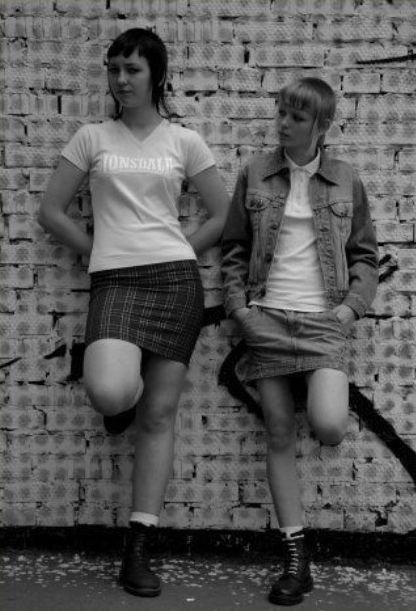History
What Is A Skinhead?
A skinhead or skin is a member of a subculture that originated among working class youth in London, England, in the 1960s. It soon spread to other parts of the United Kingdom.
Motivated by social alienation and working-class solidarity, skinheads are defined by their close-cropped or shaven heads and working-class clothing such as Dr. Martens and steel toe work boots, braces, high rise and varying length straight-leg jeans, and button-down collar shirts, usually slim fitting in check or plain.
The First Wave
In the late 1950s the post-war economic boom led to an increase in disposable income among many young people. Some of those youths spent that income on new fashions; they wore ripped clothes and would use pieces of material to patch them up as popularised by American soul groups, British R&B bands, certain film actors, and Carnaby Street clothing merchants. These youths became known as mods, a youth subculture noted for its consumerism and devotion to fashion, music, and scooters.
Working class mods chose practical clothing styles that suited their lifestyle and employment circumstances: work boots or army boots, straight-leg jeans or Sta-Prest trousers, button-down shirts, and braces. When possible, these working class mods spent their money on suits and other sharp outfits to wear at dancehalls, where they enjoyed soul, ska, and rocksteady music.
Around 1966, a schism developed between the "peacock mods" (also known as smooth mods), who were less violent and always wore the latest expensive clothes, and the "hard mods" (also known as "gang mods", "lemonheads" or "peanuts"), who were identified by their shorter hair and more working class image. Hard mods became commonly known as skinheads by about 1968. Their short hair may have come about for practical reasons, since long hair could be a liability in industrial jobs and streetfights. Skinheads may also have cut their hair short in defiance of the more middle class hippie culture.
By the early 1970s, the skinhead subculture started to fade from popular culture, and some of the original skins dropped into new categories, such as the suedeheads (defined by the ability to manipulate one's hair with a comb), smoothies (often with shoulder-length hairstyles), and bootboys (with mod-length hair; associated with gangs and football hooliganism). Some fashion trends returned to the mod roots, with brogues, loafers, suits, and the slacks and sweater look making a comeback.
The Second Wave
In the late 1970s, the skinhead subculture was revived to a notable extent after the introduction of punk rock. Most of these revivalist skinheads reacted to the commercialism of punk by adopting a look that was in line with the original 1969 skinhead style. This revival included Gary Hodges and Hoxton Tom McCourt (both later of the band the 4-Skins) and Suggs, later of the band Madness. Around this time, some skinheads became affiliated with far right groups such as the National Front and the British Movement. From 1979 onwards, punk-influenced skinheads with shorter hair, higher boots and less emphasis on traditional styles grew in numbers and grabbed media attention, mostly due to football hooliganism. There still remained, however, skinheads who preferred the original mod-inspired styles.
Eventually different interpretations of the skinhead subculture expanded beyond Britain and continental Europe. In the United States, certain segments of the hardcore punk scene embraced skinhead styles and developed their own version of the subculture.
Bill Osgerby has argued that skinhead culture more broadly grows strength from specific economic circumstances. In a BBC interview, he remarked "In the late 70s and early 80s, working class culture was disintegrating through unemployment and inner city decay and there was an attempt to recapture a sense of working class solidarity and identity in the face of a tide of social change."
